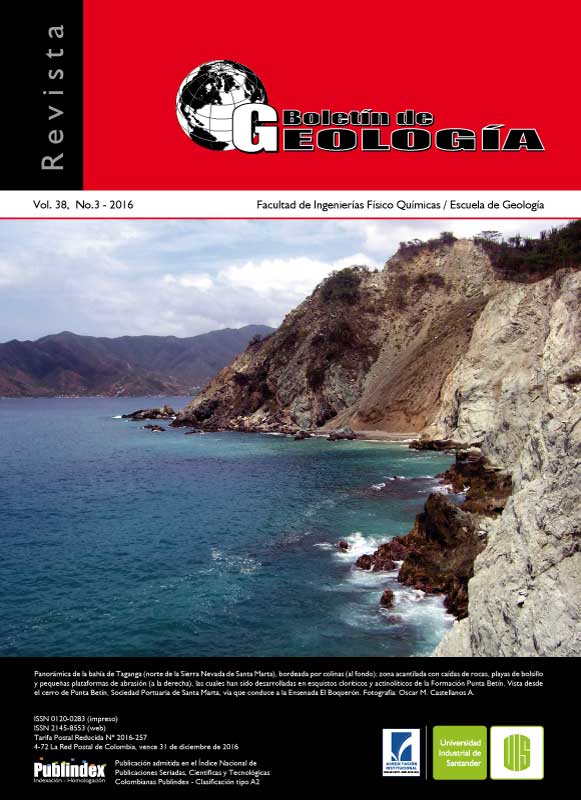SEISMOTECTONIC CHARACTERIZATION OF THE CAUCA VALLEY REGION AND SURROUNDING AREAS FROM THE EARTHQUAKE FOCAL MECHANISMS
Published 2016-07-01
Keywords
- Seismotectonic,
- earthquakes,
- stress field,
- focal mechanisms
How to Cite
Altmetrics
Abstract
This paper analyzes the focal mechanism of 49 earthquakes with magnitude Mw ≥ 4.8 in the region of Valle del Cauca and surrounding areas during the period 1978-2010. The solutions were taken from the catalogs of the International Seismological Centre (ISC) and The Global Centroid-Moment-Tensor (GCMT) Project. The depth of the events is distributed between surface and intermediate about 215 km, associated with the subduction of the Nazca plate, and a few superficial events that correspond to the activity of cortical sources in the South American continental plate. In accord with model environments strong regimes associated with the “static” deformation of the subducting plate, four seismotectonic environments, are distinguished by its own seismic, tectonic and strong regime characteristics. The seismotectonic deformation rate is presented for each of these environments. The modeling of the Coulomb effort field shows that the shear creates a barrier that prevents the compressive effort is projected into the continent in SW-NE direction, interrupted in the Colombo-Ecuadorian trench. While the tensile effort, although is also interrupted, it manages to project the continent in NW-SE direction, perpendicular to compressive effort.
